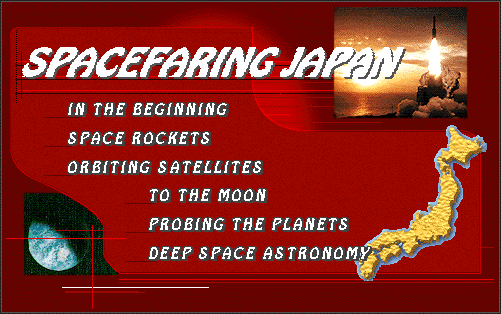

Very Long Baseline Interferometry Space Observatory Program...
MUSES-B HALCA VSOP Telescope
Satellites Rockets Surveying the Moon Exploring Planets
MUSES-B was not an interplanetary probe. Instead, it was the first satellite in a cooperative astronomy program between Japan, Russia and the U.S.
Japan's interplanetary probe Nozomi arrives at Mars in 2004 in an NASDA artist's view.
The program was called VSOP — Very Long Baseline Interferometry Space Observatory Program — and later HALCA after the successful launch of its first satellite, MUSES-B, on February 12, 1997, on the new ISAS M-V rocket from the Kagoshima Space Center.
MUSES-B, built by the Institute of Space and Astronautical Science (ISAS) with Japan's National Astronomical Observatory, was the second Mu Space Engineering Satellite. Mu was the name of the rocket. [see: MUSES-A]
NASA's Jet Propulsion Lab (JPL) supported both HALCA and Russia's RadioAstron developed at the Astro Space Center of the Lebedev Physical Institute.
A Green Bank, West Virginia, tracking station was one of several around the world that communicated with the two very long baseline interferometry satellites in orbit.
SPACEFARING JAPAN: HISTORY ROCKETS SATELLITES MOONS PLANETS ASTRONOMY JAPAN
CHINA INDIA EUROPE SEARCH STO STO COVER QUESTIONS SUGGESTIONS E-MAIL
© 2005 SPACE TODAY ONLINE